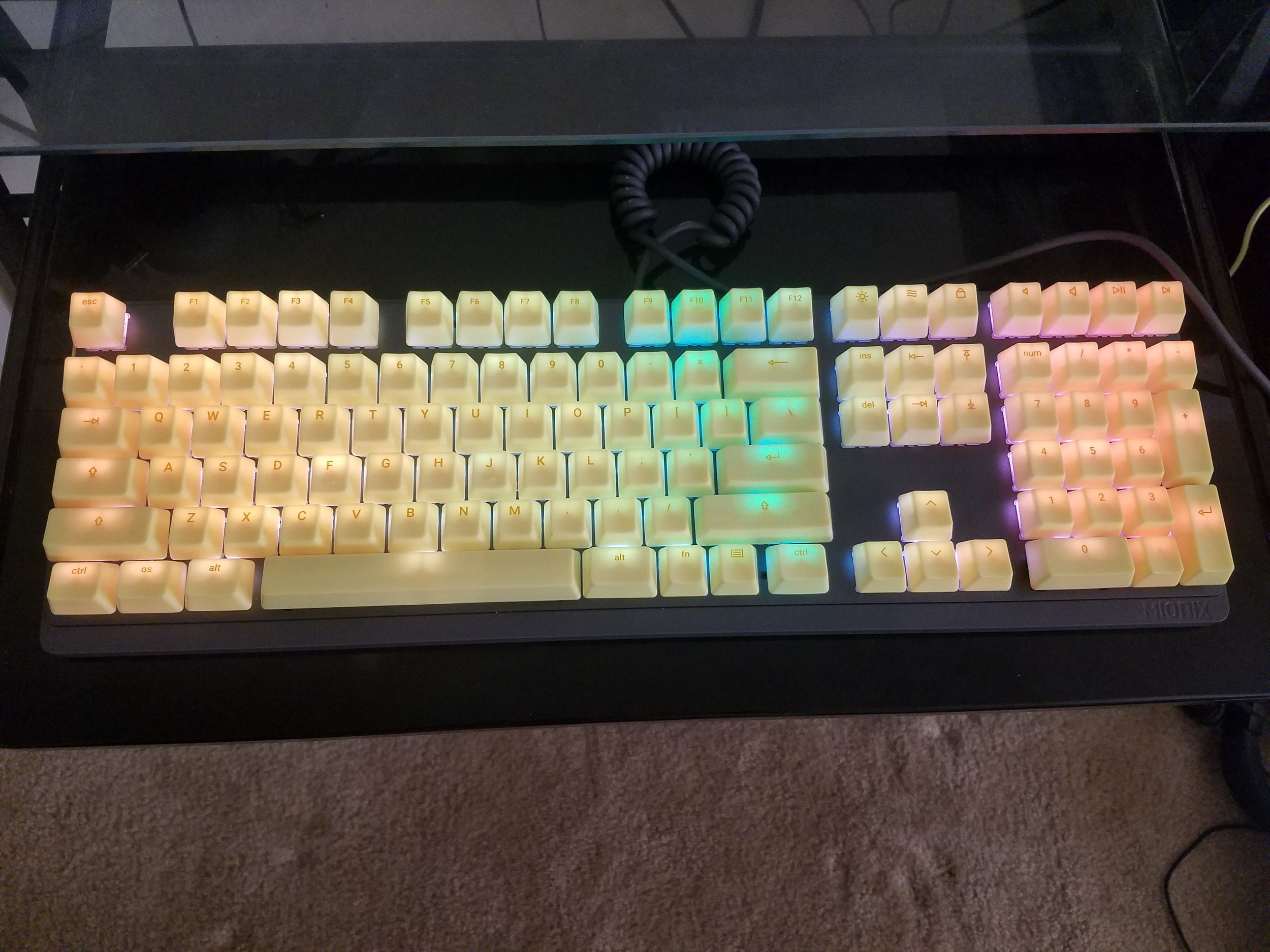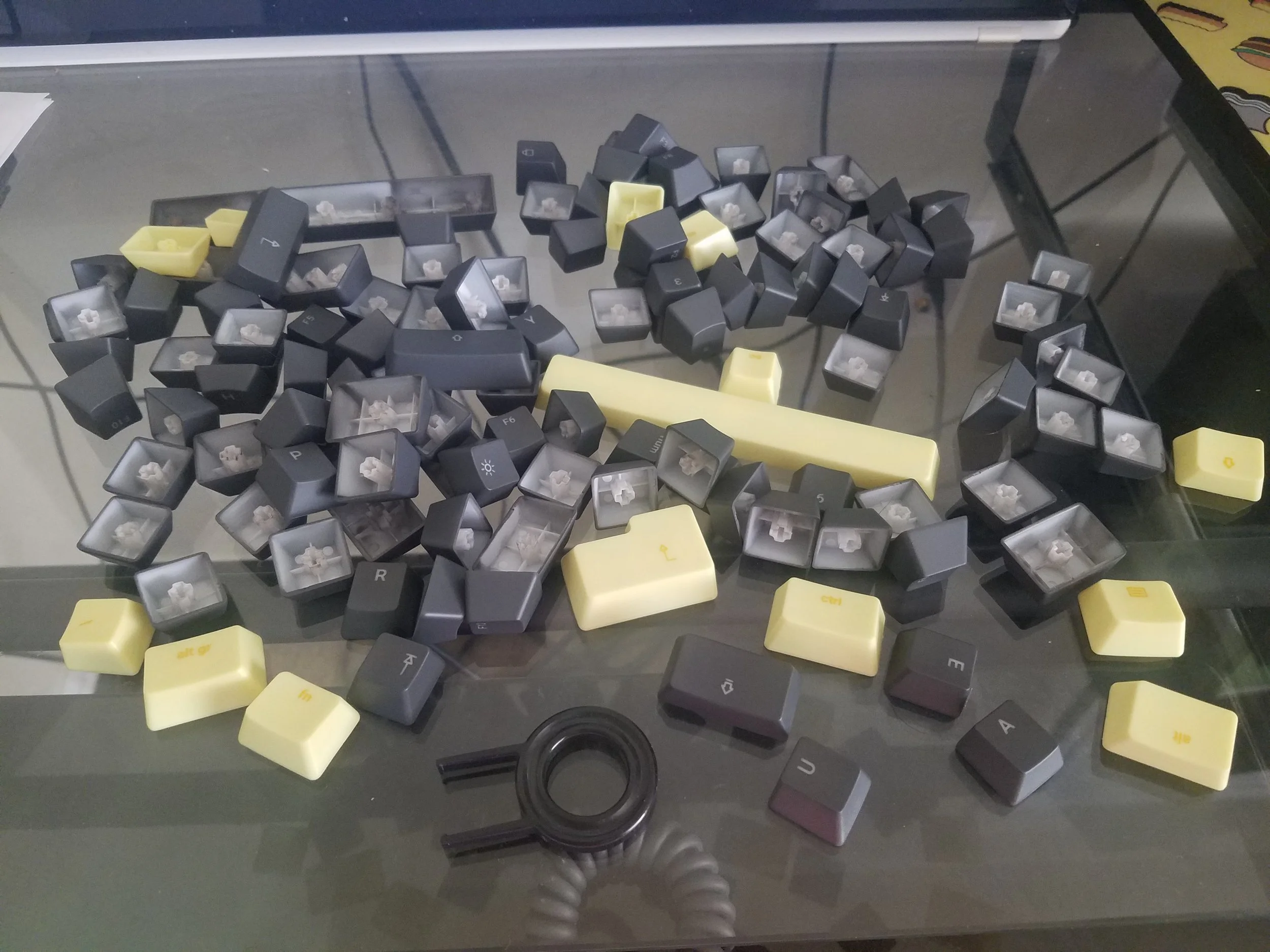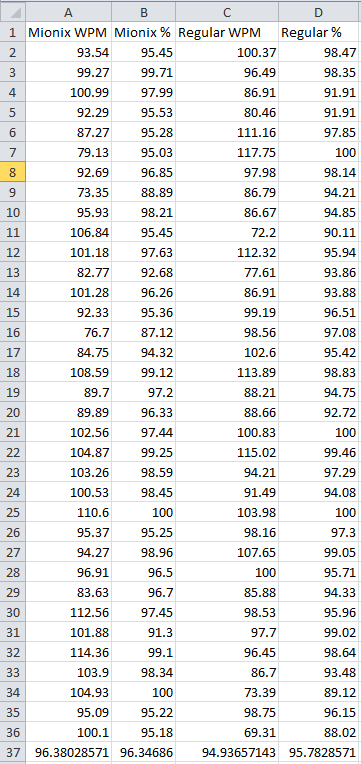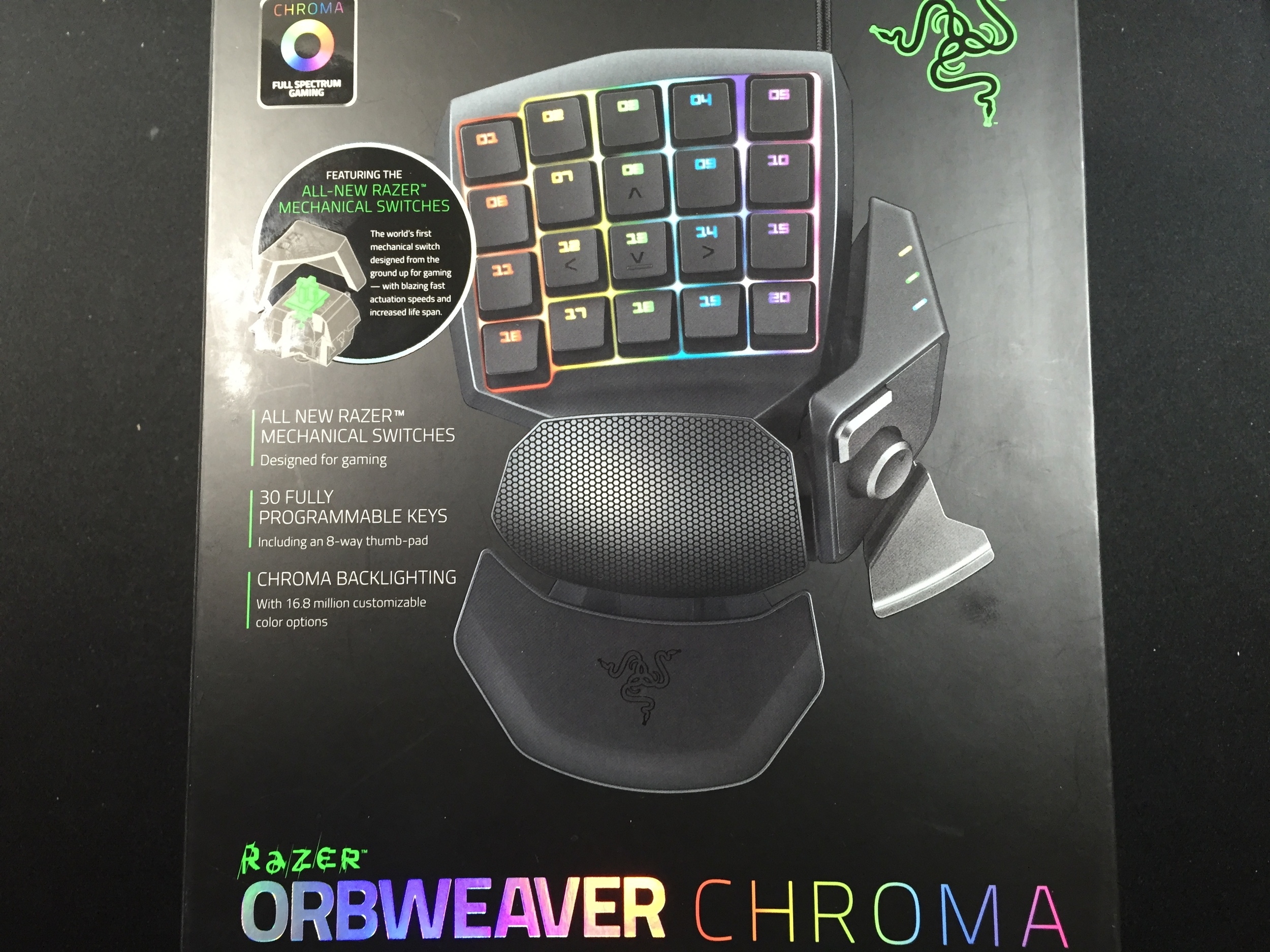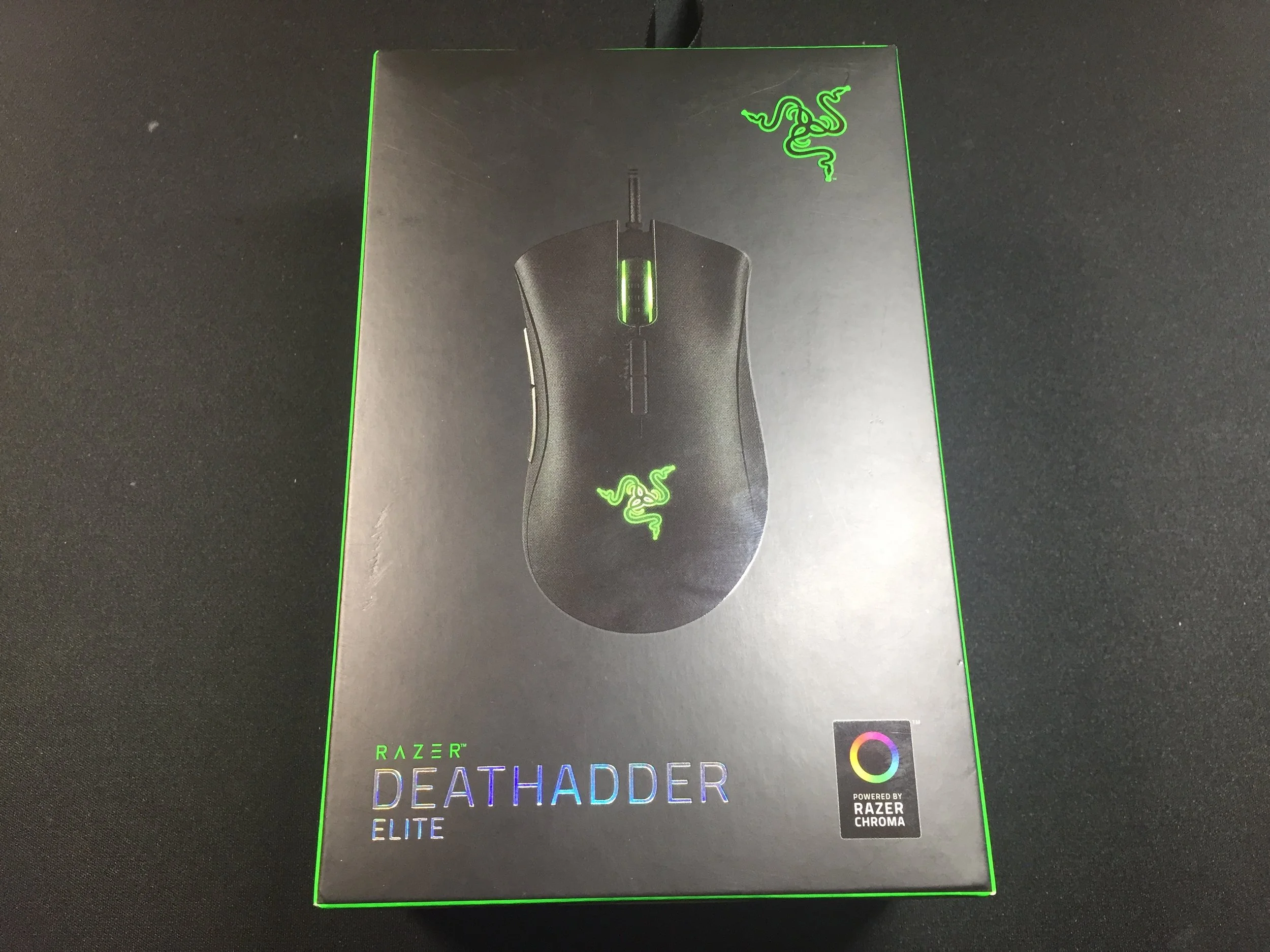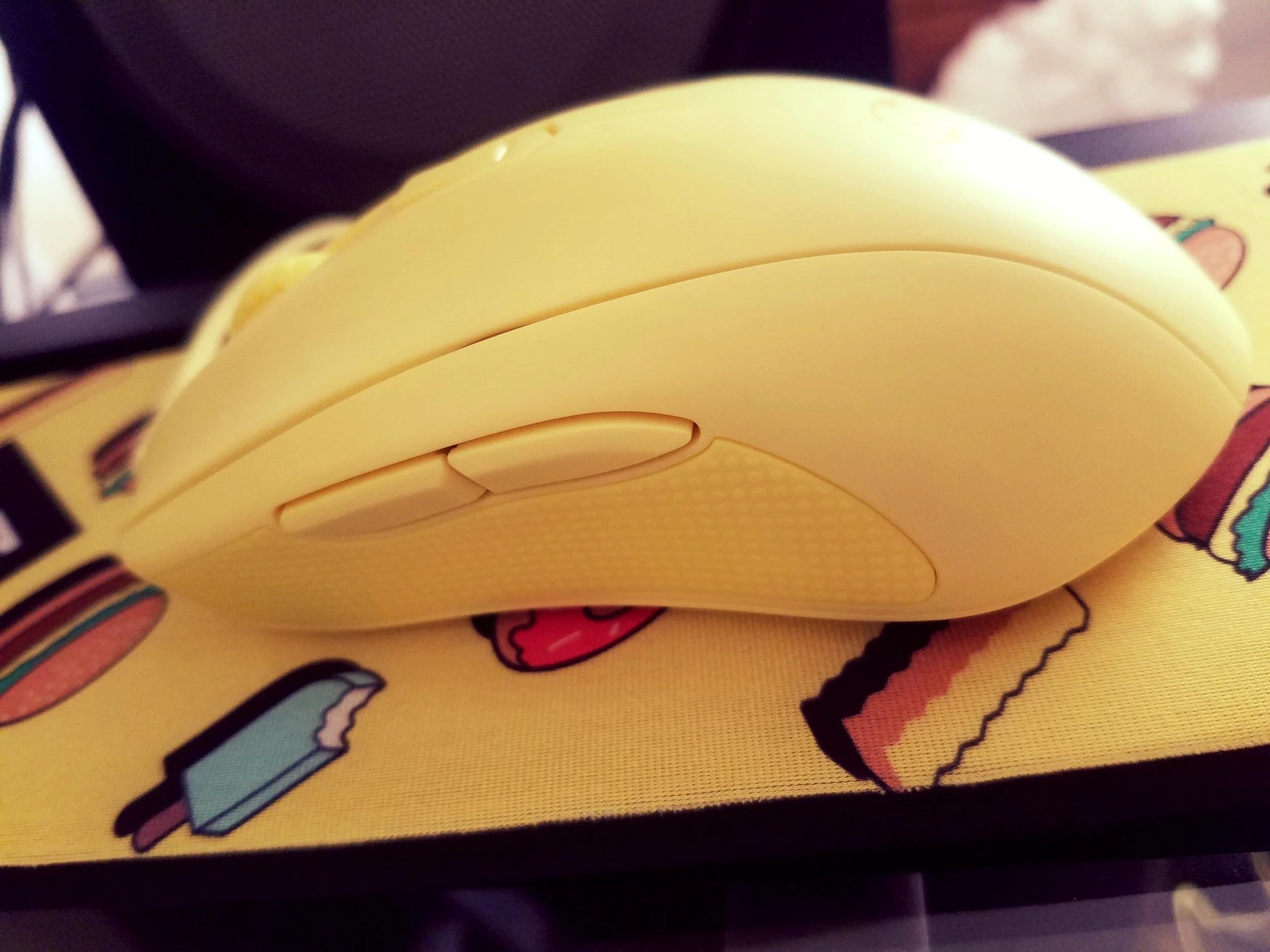The brand new Mionix Wei Mechanical Keyboard with French Fry Keycaps is the first time I've used a mechanical keyboard for an extended period of time. I've used them for short periods of times at various points, but was always turned off by the borderline maddening clicking noise that comes with mechanical keyboards. Spending this last week with the Wei has given me new insights and opinions on the value of mechanical keyboards though.
Specs and Special Features
First off, you're probably as confused as I was as to why in the world I included the words "French Fry" in the name of a keyboard. I am here to assure you that it isn't a typo, nor am I getting my words mixed up because I'm hangry. French Fry is used by Mionix to indicate that it is the color yellow.
Key features:
Cherry MX Red Switches-
What are Cherry MX Red Switches you ask? Besides being the second food I’ve mentioned already (I promise I'm not hangry!), the Cherry MX Red Switches are what really makes this keyboard stand out.
Your typical cheap keyboard is a rubber dome keyboard, which uses a sheet of rubber to give you resistance and send the information to your computer. A mechanical keyboard, on the other hand, has individual switches for every key with metal springs. Because of these individual switches, a mechanical keyboard gives you a much stronger feedback, both physically and verbally, when you hit a key. A lot of people will argue that this additional feedback over a rubber dome keyboard makes you type faster and more accurately because it helps trigger the muscle memory that you use when typing by giving you that satisfying "click" when you press a key.
The Cherry MX brand of switch is definitely the most popular switch for mechanical keyboards and each of the switches in the brand has a color which defines it, in this case red. The Cherry MX Red is the quietest of the switches (although still noticeably louder than your rubber dome keyboard) and requires the least amount of force to press a key and has the least noticeable resistance/feedback. Cherry MX Red Switches are among the most desirable switches for gamers, helping solidify the Wei towards the top of the food chain (ok, maybe I’m a tiny bit hangry).
Windows and macOS software (Mionix Hub)-
By going to mionix.net you can download the Mionix Hub software which not only allows you to change the backlight color for every single key, but also gives you the ability to reprogram all of your keys. You can either re-map a key to be a different single key(such as changing "z" to "a"), a key sequence of up to 20 keys (such as "Shift + T + H + I + S + Space + R + O + C + K + S + !"), a multimedia button (such as Play/Pause) or you can completely disable that pesky key that you are always accidentally hitting at the worst possible moment. You can even add multiple profiles so that you can quickly toggle between setups for all of your games.
6 Keyboard Layouts-
Don’t live in the US? Don’t worry, the Mionix Wei comes in 6 different layouts: US, Nordic, French, UK, German and Japanese.
Aesthetics and Build Quality
The Mionix Wei in all of its glory!
One of the big advantages of a mechanic keyboard over a rubber dome keyboard is durability and aesthetics and the Wei definitely doesn’t disappoint in either of these cases. Just looking at it and touching it for the first time you can tell that it looks beautiful and is built to last a long time.
Full RGB Backlight-
Red, Green, Blue (RGB) backlighting allows you to change the backlight color of keys which can either be used to just make your keyboard look that much more awesome, or if you have the patience to do so, it can be used to change the colors of each individual key to group keys that are used for your favorite game. I’m colorblind so taking the time to customize the color of every single key doesn’t really make a whole lot of sense for me, but even I must admit it definitely adds a certain “WOW” factor to the keyboard when done right.
A small taste to what can be done with the RGB backlighting
Exchangeable keycaps-
The keyboard itself comes with your standard colored keys, but you can purchase exchangeable keycaps of a variety of colors to fit your personality. The ones I tested are French Fry (*starts to drool with hunger*) color, which are a bright yellow. The only downside to this is now every time I look down at the keyboard I have a sudden urge to blow my diet.
Aluminum top-
The Wei comes with an aluminum top which not only makes it look better than cheap plastic, it also guarantees that the keyboard will be able to withstand all of the button mashing you’re going to do. Just make sure that if you tend to rage when you lose that you don’t throw it at your monitor, because unlike your cheap plastic keyboard, this keyboard is more likely to break your monitor than the other way around. On a positive note, you could probably use this keyboard as a weapon when the Zombie Apocalypse inevitably starts.
Solid rubber base-
This may seem simple and subtle, but it really makes a huge difference. With a cheap plastic keyboard you MIGHT get 4 small little pieces of rubber on the base of your keyboard if you’re lucky. With the Wei, the entire base of the keyboard is solid rubber. This has practically eliminated any accidental slipping of the keyboard while playing and typing.
What it could do better
While the Mionix Wei is by all means a great keyboard, it isn’t without a few faults. For starters, it took me almost an hour to change the normal keys out for the French Fry Keycaps. This isn’t a huge deal because it’s not like you’re going to be changing your keycaps out every week, but it was still a bit of a nuisance.
Now I’m going to be vulnerable for a minute, because this is a safe place… right? It might be because I’m colorblind, but I have an EXTREMELY hard time reading the keys on the French Fry Keycaps when it isn’t plugged in and utilizing the RBG Backlight. This is partially what took me so long to change the keys out, because it took me upwards of a minute on some keys to be able to determine what key it actually was.
As soon as I plugged the keyboard in for the first time, the letters that I once struggled to see became crystal clear. I can’t speak for all of the different color keycaps, but the French Fry ones could be better served to have a different color writing on them to help with the initial setup.
On top of having a hard time seeing what the keys were, I have never switched keys out on a keyboard before and while the keys came off pretty easily I was struggling to figure out how to get the keys in the middle of the keyboard off without taking all of the keys above or below them off as well. This meant that I started this adventure off by taking every single key off of the keyboard, starting at the top and working my way down, and putting them in order on my computer desk in front of the keyboard so I didn’t lose track of where they go. Then I would struggle to read what the yellow keycap said and replace it with the original key above the keyboard.
When I got about ¾ of the way done, I noticed a funny looking plastic tool underneath the pile of keycaps. I just recently got engaged and when I first saw it, it looked a lot like the magnifying glass tool that jewelers use when inspecting diamonds. I picked it up and thought to myself: “Sweet! They included a little magnifying glass that will help me better read what keys these are supposed to be!” I picked it up, held the circular part up to my eye and then put one of the keycaps up to it, excited that this task was going to be so much easier now.
My excitement quickly turned to disappointment when I discovered that this magnifying glass was broken and didn’t even have any glass in it! My hangriness was quickly turning to straight up rage, and then as I looked at it closer a lightbulb went off in my brain… the spacing on the tool looked remarkably about the same width as the keys. It turns out that it wasn’t about the same width, it was the EXACT same width as the keys, mainly because as I’m sure you already know the tool is used to replace the keys. Once I started using the tool for its actual intended purpose, the task went a lot quicker, although it was still hampered by my inability to easily read what the keys were.
Hard (for me) to read yellow keys and the "magnifying glass"... *facepalm*
Long story short: I'm a moron and this probably isn't even really an issue. It wouldn't hurt have a little one page instruction manual for keycap virgins like me though.
Another little quirk to the keyboard is that none of the keys have what the shift function does. I had always taken pride in having the keyboard memorized, but that was put to the test when it came time to use symbols such as “@”, “#” and “%”. It probably isn’t a huge deal if you are using it mainly for gaming or if you don’t care about being grammatically correct, but it definitely took some getting used to. I’m not entirely sure why they decided to omit these but I think it would be helpful adding these symbols to the keys like most other keyboards. On a positive note, I'm going to go ahead and chalk up any and all grammatical errors in this review to this little quirk. #ScapeGoat
As mentioned earlier, the Cherry MX Red Switches are among the quietest of switches for mechanical keyboards but they are still noticeably louder than a normal rubber dome keyboard. This can be both a good thing and a bad thing though, as part of the noise is part of the positive feedback that you get from a mechanical keyboard to help you be faster and more accurate, but also a downside if you are trying to play games late at night while your roommate is trying to sleep. There really isn’t any way around this because it is a defining feature of a mechanical keyboard, just something to keep in mind if you are considering switching from a rubber-dome keyboard to a mechanical keyboard.
Verdict
Because I’m a nerd (and an Analyst by profession) I decided to put the Mionix Wei to the test and see if it really is better than a typical rubber dome keyboard. To do this, I took 35 typing tests with the Wei and 35 typing tests with my Logitech K120 rubber dome keyboard, alternating keyboards every 2 tests to make sure that the results weren’t impacted by fatigue or anything else.
I started off a decent amount slower with the Wei than I did with my regular keyboard. I think part of this is because a lot of typing is muscle memory and the Wei has a different (but oh so good) feel to it. The interesting part is that because of how the Wei felt and sounded I thought that I was typing faster and more accurately with it, even though the results were proving otherwise.
As I completed more and more tests I started getting more and more comfortable with the feel of the Wei and by the conclusion of my tests I actually ended up being faster and more accurate on the Wei than with my Logitech. After all 35 of the tests I ended up with an average of 96.38 words per minute on the Wei, while only 94.94 words per minute on the Logitech. My accuracy with the Wei finished with an average of 96.34%, while my Logitech lagged slightly behind at 95.78%. While these may not seem like that big of a difference, every little bit of speed and accuracy counts when you are gaming. As a result of this increased speed and accuracy I saved about 30 seconds by writing this review with the Wei. 30 seconds doesn’t seem like a lot, but that is 30 seconds I could spend doing something else like eating some french fries to cure my hangriness.
Eat your heart out stat geeks!
Similar to when you are buying a house and looking for something with good curb appeal, the Mionix Wei has what I would call great “click appeal”. I would definitely recommend getting this keyboard if you are in the market for a mechanical keyboard. The aesthetically pleasing design, durability, comfortable feel and fully programmable keyboard make it definitely worth your time and money.
Mionix Wei Mechanical Keyboard (Amazon Affiliate Link)
Mionix French Fries Key Caps (Amazon Affiliate Link)
